From systems design to process design, product design covers a range of different disciplines and methodologies. In this comprehensive guide, we delve into the different types of product design and best practices for its implementation!
Are you curious about why some products feel intuitive to use while others leave you overwhelmed, confused, or frustrated? If that’s the case, you’re in the right place, because we’re here to talk about product design.
In this guide, we want to unpack the process of designing functional, effective, aesthetically pleasing, and user-centered products from digital interfaces to entire systems. As well as exploring the umbrella term “product design”, we’ll be running you through the major subcategories of the discipline such as systems design, process design, and adaptive product design, exploring their unique roles and methodologies.
If you’re looking to deepen your understanding of product design and its relationship to users, products, and systems, this comprehensive guide will provide the valuable insights and best practices you need.
Contents:
- What is product design?
- What does a product designer do?
- Three main areas of product design
- Four main types of product design
- Best practices for excellent product design
- Conclusion
Ready to learn more?
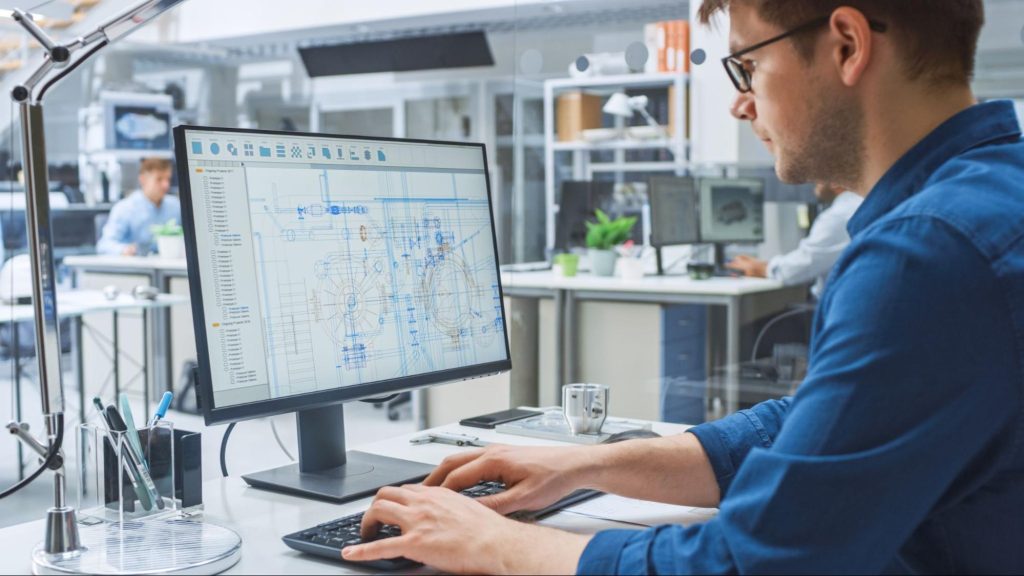
What is product design?
Product design is the process of designing and creating new products that solve specific user challenges. This involves working out exactly what users need (via research methods), thinking up relevant solutions that enable users to meet that need (via ideation), and then transforming those solutions/ideas into tangible products that can be used in the real world (via prototyping and testing).
In addition to solving the core problem, the product design team seeks to optimize functionality, create an appealing aesthetic, build a sustainable production pipeline, ensure feasibility, and create a positive user experience.
What’s important here is not just creating a great product that functions as it should; it’s about creating a product that works well for the people who are going to use it.
What does a product designer do?
The role of the product designer is to create, oversee, and manage the design of a physical or digital product. Focusing on look, feel, and functionality, this individual is responsible for the following tasks in the product design process:
- Conducting extensive research into understanding user needs, the market, and technical constraints
- Proposing ideas for new products, features, and functions
- Creating mockups and prototypes to test out and iterate on their ideas
- Ensuring products are easy to interact with and visually appealing while supporting users in reaching their goals
- Collaborating with engineers, marketers, and manufacturers to produce a polished final product that meets the goals of the user, the business, and the design team
- Testing the product with users to identify issues and refining the product based on user feedback
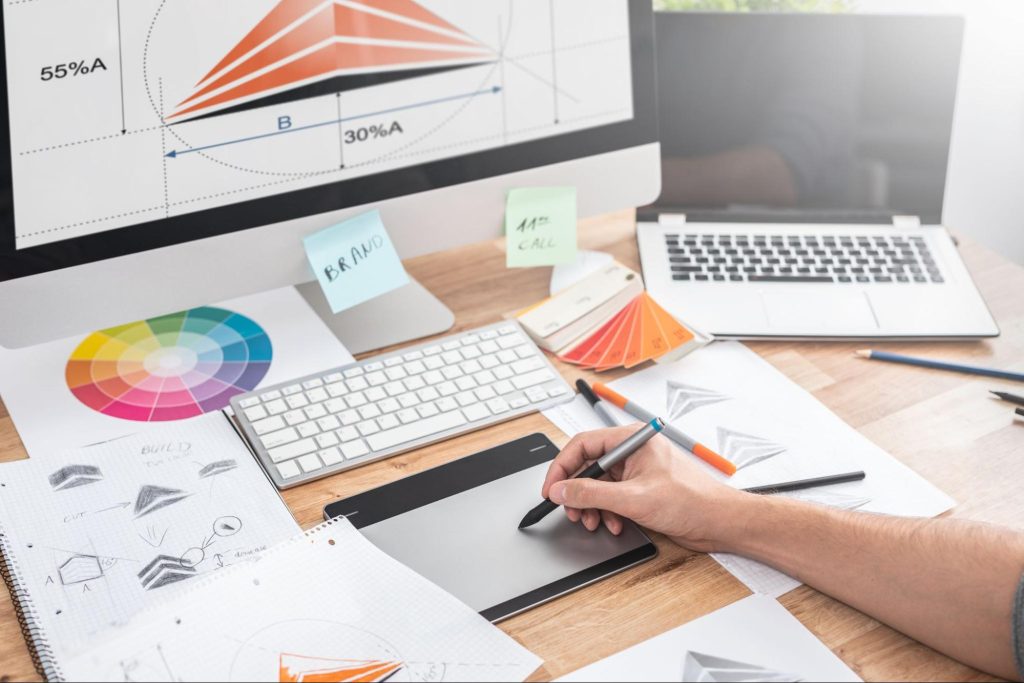
Three main areas of product design
Product design can be divided into three main areas: UX design, UI design, and Industrial design. Let’s take a look at what these types of product design involve.
1. UX design
UX design–short for user experience design–is the practice of optimizing and improving the feel and usability of a product for its target users. UX designers undertake extensive research, wireframing, prototyping, and testing to boost user satisfaction and create seamless interactions between users and products.
Understanding the target audience, their needs, preferences, behaviors, and desires is a key part of UX design. By incorporating methods such as user personas, surveys, and usability testing, UX design teams are able to gather valuable data and insights that inform design decisions, enabling them to improve ease of use, accessibility, and functionality.
Increasingly, a positive user experience is becoming a brand differentiator. Great UX design that focuses on problem-solving and guiding users on an engaging and effective customer journey helps a business retain users, boost sales, and get positive recommendations.
2. UI design
While UX design focuses on the experiences users have when they interact with a product or service, UI design–short for user interface design–is concerned with the visual elements of a product and how users can interact with digital systems in ways that feel intuitive to them. Design elements that a UI designer might work closely on include an interface’s layout, buttons, icons, colors, and typography.
The user interface should always aim to support identified user objectives, with consistency, functionality, and aesthetic appeal coming high on the agenda. This isn’t just important for users to have a positive interaction with an interface, but also because businesses know that when a clear, attractive, and user-friendly interface is successfully implemented, user engagement soars.
UI designers work with different types of interfaces, such as web platforms, mobile apps, and digital software. However, irrespective of the interface they are working with, a UI designer seeks to ensure that users don’t just understand how to interact with a product or service but also enjoy doing so. When functionality and enjoyment are achieved, UI designers know that users will keep returning to the product or service.
3. Industrial design
Intersecting engineering and ergonomics, industrial design focuses on the creation of physical, manufactured products that look good and function seamlessly in real-world contexts, with the goal of being produced en masse. Industrial designers work on everything from household appliances and electronics to furniture and vehicles, crafting objects that are user-optimized, efficient, and highly functional while also providing a satisfying user experience.
Industrial design is heavily influenced by factors such as materials, production processes, business strategy, social attitudes, and commercial trends. With these in mind, the industrial designer’s goal is to optimize a product’s form, usability, materials, and even manufacturing systems through extensive prototyping, testing, and product refinement.
The goal of the industrial designer is to ensure that products:
- Meet safety standards
- Are cost-effective to manufacture
- Provide a satisfying user experience
- Are durable
- Are sustainable
- Work effectively in the real world
Industrial designers typically place emphasis on both intuitive creativity and calculated scientific decision-making, combining aesthetics and user-focused considerations to create the very best products.
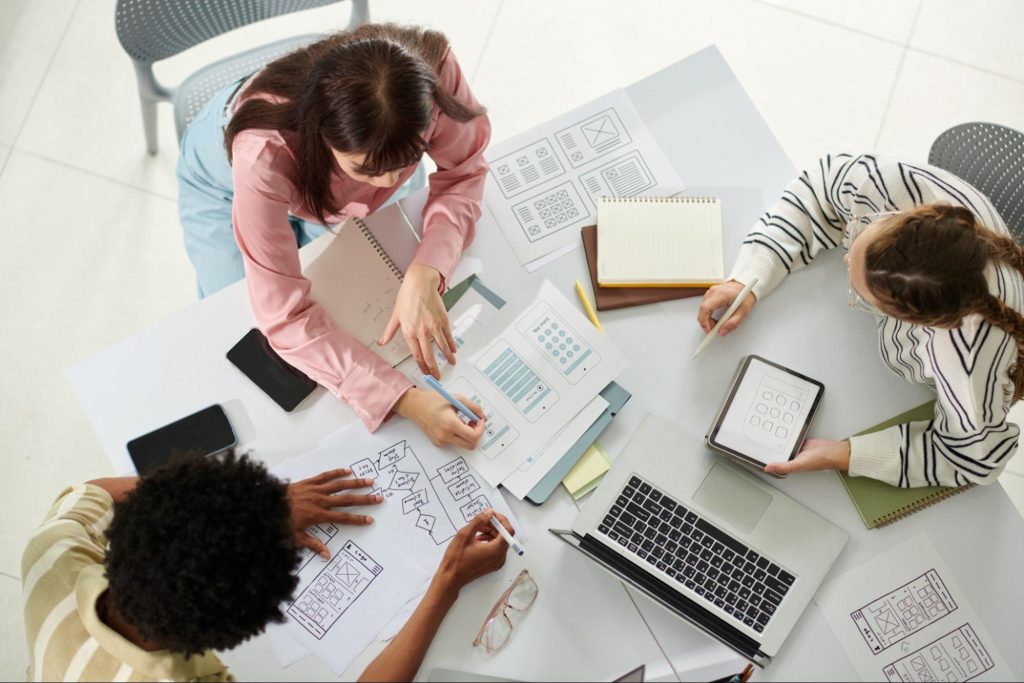
Four main types of product design
Now that we’ve covered the main areas of product design, let’s dive deeper into the different types of product design you are likely to come across: systems design, process design, interface design, and adaptive product design.
1. Systems design
Typically used in software, hardware, and organizational systems, systems design refers to the process of defining and improving the architecture, components, interfaces, and overall structure of a system in order to align with identified goals and specific requirements. The discipline is centered around thinking holistically about a process, application, or system and then examining how all the different parts of that system, however small, can work together in the most efficient and effective ways possible.
System designers create an organized structure or blueprint that describes how different elements should interact with each other so that the system as a whole achieves its desired functionality and performance. This process often involves the systems designer breaking down complex challenges into smaller components and then, using algorithms, data structures, and technologies, looking at how these components can better interact.
2. Process design
As we have seen, product design is focused on creating products that users will love and use. Process design, on the other hand, is focused on the workflows and systems that enable the creation of such products. Specifically, it involves the planning and organization of workflows, tasks, and activities within an organization or system that optimize internal efficiency, boost the quality of outcomes, and enable a team to meet its goals.
While process design does not in itself result in a specific product or service, it supports the creation of these tangible outcomes by streamlining operations, eliminating bottlenecks, reducing waste, and ensuring that each step in the process of making the product or service adds value to the final result.
To do this, the process designer does the following things:
- Analyzes existing processes and conceptualizes new ones
- Defines key internal roles and responsibilities
- Maps out how to move a project from one stage to the next
- Selects appropriate tools, technologies, and other resources
- Creates standardized procedures and documentation
Irrespective of the process that is being optimized, improved, or completely overhauled, process design is an essential approach for boosting overall productivity, mitigating errors, and ensuring continuous improvement throughout a project.
3. Interface design
The terms interface design and user interface design (UI design) are frequently used interchangeably. However, there are some differences between these two design fields depending on the context.
While UI design tends to concentrate on the user-facing components of digital products, interface design covers a broader spectrum of interfaces such as physical interfaces or an interface between software systems. While the main goal of interface design is the same as UI design–facilitating smooth, intuitive interactions and helping users complete tasks with minimal effort–interface design is a more general term that is applied to the design of any interaction point between users and systems (or between systems themselves) and can refer to both physical and digital interfaces.
4. Adaptive product design
With a user-centered approach at its heart, adaptive design refers to the process behind creating web content that fits within multiple screen sizes and devices to enhance user accessibility and usability. This is achieved when a web development team incorporates distinct fixed layout designs for specific breakpoints, eliminating the reliance on the flexible grids typically used in responsive design.
With layouts able to shift and adapt to different screen dimensions, users are able to benefit from a more optimal experience which in turn drives higher engagement across different types of digital platforms and interfaces.
Key responsibilities in adaptive product design include:
- Designing flexible layouts that automatically adjust to screen sizes
- Ensuring cross-platform consistency and cohesiveness in terms of user interactions and design elements
- Applying the results of user research and testing to adaptive designs for diverse devices and use cases
- Optimizing for performance and ensuring design aesthetics don’t compromise functionality
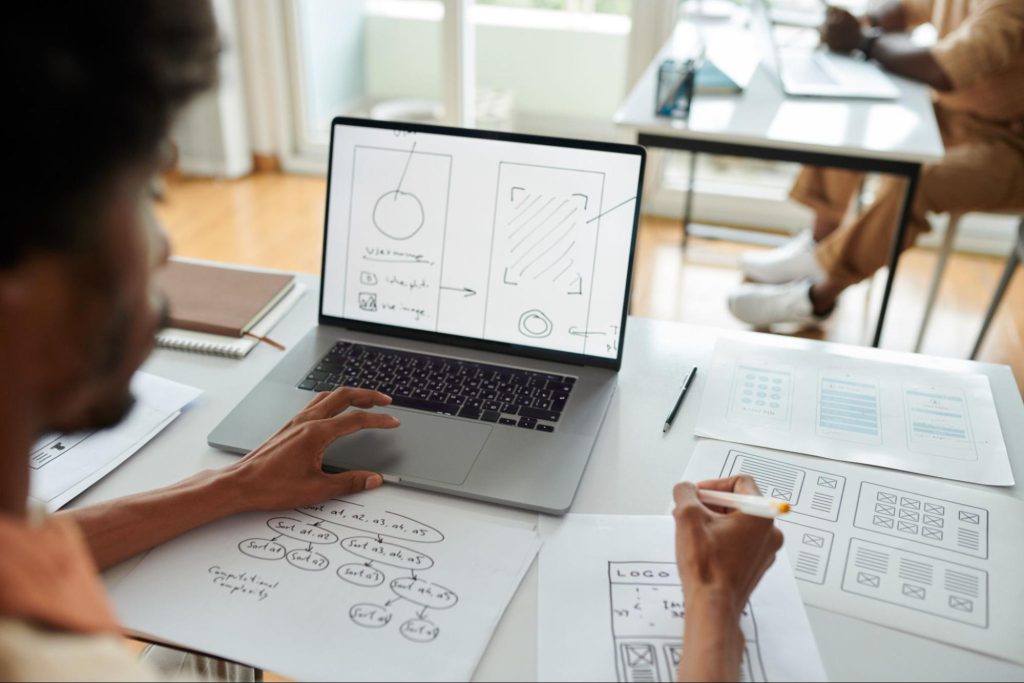
Best practices for excellent product design
What do you need to do to ensure your products are functional, reliable, user-focused, and effective? We’ve compiled some best practices to guide your design decisions and ensure optimal product outcomes.
1. Understand the user’s needs
A deep understanding of the target user is the foundation of any great product design. Knowledge of a user’s needs, preferences, and behaviors should always be what informs your final design.
To get to know your users’ needs, pain points, and desires you’ll need to conduct extensive and thorough user research using methods such as interviews, surveys, focus groups, and user testing. This will help you better empathize with the people you are designing for and more effectively prioritize features, elements, and options.
2. Prioritize usability
Usability refers to how easy a product is to navigate and how effectively it meets users’ needs. It should be prioritized because it directly impacts how well users can interact with a product as a whole, ultimately determining their overall experience.
For this reason, design with clarity and intuitiveness in mind, crafting clearly defined layouts with minimal distractions and obvious calls to action (CTAs). Flow diagrams and wireframes will help you visualize how users will interact with your product and navigate it. Finally, base your designs on user research. This will ensure that your product is solving a real user challenge and help you stay focused on crafting an optimal user experience.
3. Keep your design simple
Simple designs that work well are much more likely to be successful than those with multiple elements that can distract and overwhelm users. A design becomes instantly more elegant and easier to navigate when unnecessary or non-essential features are stripped away.
To achieve a simple yet effective design, use a clear and consistent visual hierarchy that enables users to perform their tasks intuitively. Consider embracing a minimalist approach to fully optimize the user experience.
4. Ensure functionality
Functionality may seem like an obvious priority for a product design team. However, you might be surprised to learn how many products don’t perform as they should. For this reason, prioritizing seamless functionality will ensure your product stands out from the competition and sees users returning again and again.
Reliability, responsiveness, and performance should also be at the top of the agenda for the product design team. This means users can depend on the product to work as and when they need it to. Continual testing and refinement help here, as these methods ensure that a product remains fully functional as it evolves and changes over time.
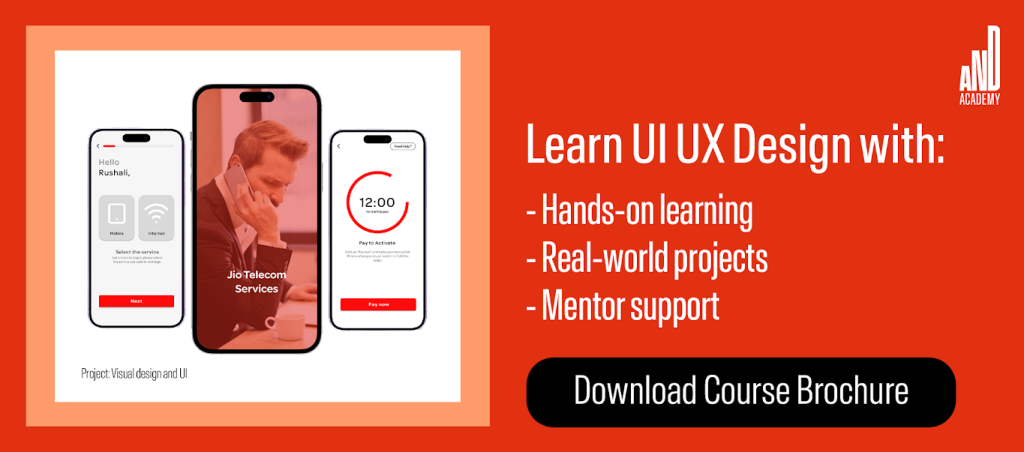
5. Be mindful of accessibility
In order to enable everyone to access and enjoy your product, it’s extremely important to design with inclusivity in mind. For those with disabilities, following accessibility guidelines like WCAG (Web Content Accessibility Guidelines) ensures your design is fully inclusive, while simple adjustments to color contrast, keyboard navigation, screen readers, and other assistive technologies will support a universally accessible user experience.
It’s a good idea to regularly audit your designs for inclusivity. You can do this by gathering feedback on your product from diverse user groups who can test and assess it for accessibility.
6. Test, make improvements, and test again
To understand how effective the design and manufacture of your product is you’ll need to test extensively with real users. By observing users with interactive prototypes, you can gather real-time feedback that informs data-driven insights that can pinpoint areas for improvement.
Once the feedback from users has been implemented, it’s a good time to retest the product and verify the effectiveness of the adjustments. Not only might you discover new issues that were missed the first time around, but continuously testing and refining a product ensures it stays relevant, functional, and always meets the needs of the user.

Conclusion
Product design is fundamental to the development of innovative and effective solutions that truly resonate with users and improve their lives. As we’ve seen in this guide, by digging into users’ needs and prioritizing usability and functionality, designers can craft exciting and valuable products that are not just enjoyable to interact with, but highly effective, too. You can also check out this project by AND Learner, Shantanu Pathak, to further gain insights into turning user needs into useful products.
Next Steps
If you’d like to learn more about design, we’d recommend you head over to the AND Academy Design Blog for more articles like this one. In case you think you need further assistance, here are some of our resources you can consider:
- Watch this session by Shiva Viswanathan, Design Head of Ogilvy Pennywise, and Naman Singh, Product Experience Designer at RED.
- Talk to a course advisor to discuss how you can transform your career with one of our courses.
- Pursue our UI UX Design courses – all courses are taught through live, interactive classes by industry experts, and some even offer a Job Guarantee.
- Take advantage of our scholarship and funding options to overcome any financial hurdle on the path of your career transformation.
Note: All information and/or data from external sources is believed to be accurate as of the date of publication.









